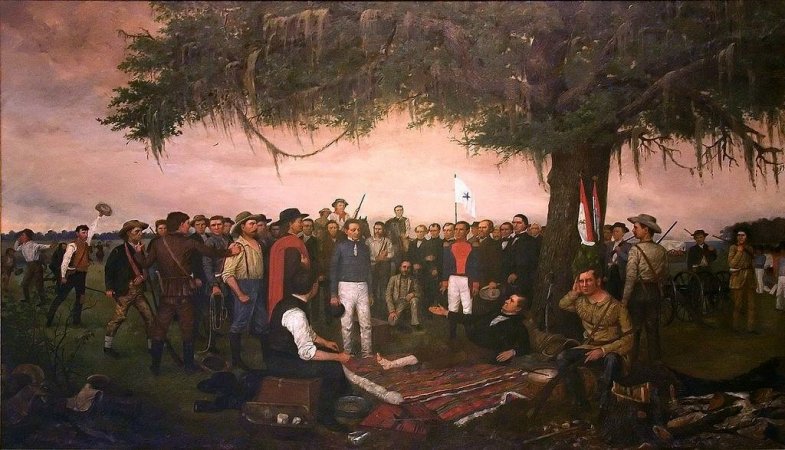Texas Revolution – A Courageous Fight For Independence
Ellen Lloyd - AncientPages.com - The modern city of Houston, Texas, is named after General Sam Houston, who led his troops to victory against Mexicans at the Battle of San Jacinto in 1836.
Not every revolution is as famous as the one that took place in France (1789- 1799), but to people living in Texas, the uprising at the end of 1835 dramatically changed the political situation and their living conditions.
Henry Arthur McArdle's 1895 painting, The Battle of San Jacinto. Credit: Public Domain
The Texas Revolution lasted from October 2, 1835, to April 21, 1836, and led to Texas’ independence from Mexico and the founding of the Republic of Texas (1836–1845).
Many factors led to the revolution. The main reason behind it was cultural and political disputes between Anglo-Americans who lived in Texas and the Mexican government.
When Mexico gained independence in 1821, colonists had fewer restrictions. As a result of this, thousands of settlers moved from the southern USA to Texas.
These newcomers made Texas their home, and soon, there were more Anglo-Americans in the area than Spaniards and Mexicans. The situation between the English and Spanish-speaking population became tense.
Mexico felt the country was losing control over Texas and responded in 1835 by introducing “Siete Leyes” – the Seven Laws.
This angered the Anglo-American population in Texas because these laws gave the Mexican President Antonio López de Santa Anna (1794 – 1876) more political power. This led to the Texas Revolution in 1835.
Using guns, people in the Mexican province of Texas forced federal troops out of the region. Shortly after this, a temporary Texas government was established. Its task was to decide whether Texas should become an independent state or remain under the control of Mexico.
President Santa Anna was furious and responded by sending the Mexican army that he led himself. The Mexican President was determined to end the revolutions and crush the colonists, but his plans failed.
When the revolutionists and the Mexican army troops confronted each other, it became clear that the Anglo-Americans had no intentions to surrender. The “Runaway Scrape”, the name Texans applied to their flight from their homes started in January 1836. When Mexicans gathered on the Rio Grande, people left the area.
In 1836, after fighting intensely for 13 days, a group of Texan volunteer soldiers was brutally killed by the Mexican Army. President Santa Anna had ordered his troops to take no prisoners and only a small number of Texans were spared.
The heroic Battle of the Alamo became a symbol of Texans’ resistance and fight for independence.
"Surrender of Santa Anna" by William Henry Huddle (1847 - 1892) shows the Mexican president and general surrendering to a wounded Sam Houston, battle of San Jacinto. Credit: Public Domain
On April 21, 1836, everything changed, but this time in favor of the Texans.
President Sam Houston (1793 -1863) led about 800 Texans against Santa Anna’s Mexican force of 1,500 men at San Jacinto. While shouting “Remember the Alamo” the Texan army attacked and defeated the Mexican forces.
President Santa Anna was captured and agreed with President Houston to end the war.
The victory at San Jacinto ensured the success of Texan independence.
Updated on March 11, 2024
Written by Ellen Lloyd – AncientPages.com
Copyright © AncientPages.com All rights reserved. This material may not be published, broadcast, rewritten or redistributed in whole or part without the express written permission of AncientPages.com
Expand for referencesBarker, Eugene C. "Stephen F. Austin and the Independence of Texas." The Quarterly of the Texas State Historical Association13, no. 4 (1910): 257-84. http://www.jstor.org/stable/30242989.
More From Ancient Pages
-
 On This Day In History: Charter Of The Forest Was First Issued On London – On Nov 6, 1217
Featured Stories | Nov 6, 2016
On This Day In History: Charter Of The Forest Was First Issued On London – On Nov 6, 1217
Featured Stories | Nov 6, 2016 -
 Why Did Neanderthals Visit A Special Cave In Jersey For Over 100,000 Years?
Archaeology | Dec 13, 2016
Why Did Neanderthals Visit A Special Cave In Jersey For Over 100,000 Years?
Archaeology | Dec 13, 2016 -
 Utukku Lemnutu: Incantations Used As Therapy In Mesopotamia
Archaeology | Oct 25, 2016
Utukku Lemnutu: Incantations Used As Therapy In Mesopotamia
Archaeology | Oct 25, 2016 -
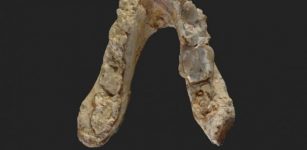 7.2-Million-Year-Old Pre-Human Remains Suggest Our First Ancestor Came From Europe Not Africa
Archaeology | May 23, 2017
7.2-Million-Year-Old Pre-Human Remains Suggest Our First Ancestor Came From Europe Not Africa
Archaeology | May 23, 2017 -
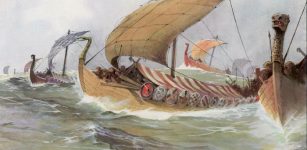 Battle Of Visby – Death Came With King Atterdag’s Ships
Featured Stories | Jul 27, 2022
Battle Of Visby – Death Came With King Atterdag’s Ships
Featured Stories | Jul 27, 2022 -
 Nemesis: Winged Goddess Of Justice And Revenge
Featured Stories | Jun 2, 2016
Nemesis: Winged Goddess Of Justice And Revenge
Featured Stories | Jun 2, 2016 -
 Pandavleni Caves: Skillfully Carved Rocky Realms Decorated With Sculptures And Inscriptions In Brahmi Script
Featured Stories | Aug 1, 2016
Pandavleni Caves: Skillfully Carved Rocky Realms Decorated With Sculptures And Inscriptions In Brahmi Script
Featured Stories | Aug 1, 2016 -
 Why Were Conch-Shell Trumpets So Important To The Ancient Chacoan Society?
Archaeology | May 7, 2024
Why Were Conch-Shell Trumpets So Important To The Ancient Chacoan Society?
Archaeology | May 7, 2024 -
 65,000-Year-Old ‘Stone Swiss Army Knives’ Show Early Humans Had Long-Distance Social Networks
Archaeology | Oct 22, 2022
65,000-Year-Old ‘Stone Swiss Army Knives’ Show Early Humans Had Long-Distance Social Networks
Archaeology | Oct 22, 2022 -
 Knights Templar’s Mysterious Underground Chambers Hidden In The Caynton Caves Discovered
Archaeology | Apr 13, 2021
Knights Templar’s Mysterious Underground Chambers Hidden In The Caynton Caves Discovered
Archaeology | Apr 13, 2021 -
 Why Human Languages Can Be Likened To Branches On A Tree And Help Finding A Single Common Ancestor
Linguistic Discoveries | Sep 11, 2021
Why Human Languages Can Be Likened To Branches On A Tree And Help Finding A Single Common Ancestor
Linguistic Discoveries | Sep 11, 2021 -
 Italy’s Stunning Secret Temples Of Damanhur – City Of Light
Featured Stories | May 21, 2017
Italy’s Stunning Secret Temples Of Damanhur – City Of Light
Featured Stories | May 21, 2017 -
 Ptolemaic-Era Warship Discovered Near The Sunken City Of Heracleion In Alexandria By Underwater Archaeologists
Archaeology | Jul 20, 2022
Ptolemaic-Era Warship Discovered Near The Sunken City Of Heracleion In Alexandria By Underwater Archaeologists
Archaeology | Jul 20, 2022 -
 Incredible Ancient Roman ‘Service Station’ With Hundreds Of Artifacts And Dozens Bodies Found In Hertfordshire, UK
Archaeology | May 12, 2022
Incredible Ancient Roman ‘Service Station’ With Hundreds Of Artifacts And Dozens Bodies Found In Hertfordshire, UK
Archaeology | May 12, 2022 -
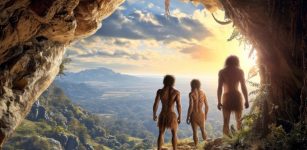 ‘Blue Highways’ Helped Middle Stone Age Humans Who Survived The Toba Supereruption 74,000 Years Ago
Evolution | Mar 26, 2024
‘Blue Highways’ Helped Middle Stone Age Humans Who Survived The Toba Supereruption 74,000 Years Ago
Evolution | Mar 26, 2024 -
 Anglo-Saxon Previously Unknown Monastic Or Trading Center – Discovered
Archaeology | Mar 7, 2016
Anglo-Saxon Previously Unknown Monastic Or Trading Center – Discovered
Archaeology | Mar 7, 2016 -
 Australia’s Two-Meter-Long And Oldest Known Rock Painting Of A Kangaroo – Revealed
News | Feb 23, 2021
Australia’s Two-Meter-Long And Oldest Known Rock Painting Of A Kangaroo – Revealed
News | Feb 23, 2021 -
 Fire-Burning Event At The Maya Kingdom Of K’anwitznal Was A Reaction To Regime Change
News | Apr 19, 2024
Fire-Burning Event At The Maya Kingdom Of K’anwitznal Was A Reaction To Regime Change
News | Apr 19, 2024 -
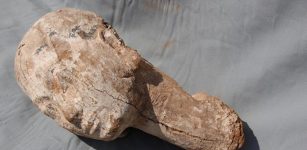 Ancient Wooden Sculpture Of Queen Ankhesenpepi II Discovered At Saqqara, Egypt
Archaeology | Oct 18, 2017
Ancient Wooden Sculpture Of Queen Ankhesenpepi II Discovered At Saqqara, Egypt
Archaeology | Oct 18, 2017 -
 Extraordinary Ancient Roman Ceremonial Chariot Discovered In Pompeii – It’s Still Almost Intact
Archaeology | Mar 1, 2021
Extraordinary Ancient Roman Ceremonial Chariot Discovered In Pompeii – It’s Still Almost Intact
Archaeology | Mar 1, 2021


